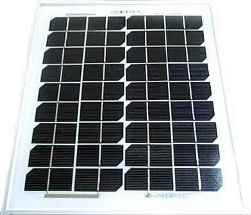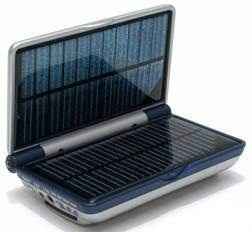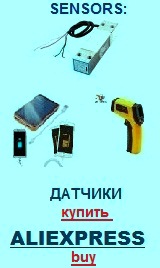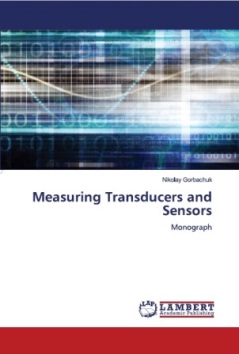Transducers, gauges, sensors - Information portal © 2011 - 2025 Use of material is possible by placing an active link
русский / english
Home >> Photo effects, light >> Solar power - how it works. Modern solar battery
Photoconductivity
Photoeffect of plug-forming layer
Solar battery
Selenium photocells
Selenium fotoresistance
Bolometrs
Photo effects, light


• Information about various converters and sensors of physical quantities, parameters of various physical processes is presented.
• Electrophysical properties and effects in various electrical materials.
• Theory, experimental results, practical application
Solar battery
The first solar cell was called the solar battery. Technology for producing silicon battery, physical and technical basics.
Solar panel so named first silicon solar cell. This solar cell was created in 1953 and is a converter of radiant energy into electrical energy with very large for this class of device efficiency, reaching 6%.
Silicon - element with semiconducting properties, located in the IV group of the periodic system, the second most abundant element in nature. Its atomic weight 28.06, and the sequence number 14. The melting point of the crystalline silicon 1415 ° C, a boiling point of 2360 ° C. The conductivity of silicon, depending on the type and number of impurities introduced into it varies widely. Like the three other group IV elements, silicon has a diamond-type lattice.
For many years already relatively silicon is subject to extensive physical research. In recent years, physicists have focused its attention on the study of its electrical properties. As a result of long-term research results have been obtained, are of great value, both for the theory and in practice. Among these results is very important method of producing silicon with a prescribed mechanism for conduction - electron or hole, allowed to develop silicon detectors. As important result, of course, should be considered in the development of technology for the introduction of a single crystal of silicon impurities impurity atoms, allowing to obtain a single crystal of p-n-junction, on the basis of which was created by a silicon solar cell with a barrier layer.
Manufacturing technology of SPC is complex. It boils down to the following operations. First, from the molten silicon is grown large single crystals. Cultivating single crystals can be in different ways. One of them is the fact that the molten silicon is immersed seed and slowly rises up. Seed, that is, a small monokristallik the substance is a crystallization center around which crystallization starts. During the slow recovery seed begins the gradual formation of a single crystal of silicon, which can be obtained by a large enough size. The whole process is carried out under high vacuum conditions. Induction heating of silicon is high oven.
The resulting silicon single crystals are cut into thin plates of rectangular shape. The album has an electronic conduction mechanism. To create a photocell with a barrier layer requires a system of two semiconductors of opposite conduction mechanisms. To do this, one of the surfaces of the plate covered with a thin even layer of boron and for some time the plate is heated in an electric furnace for continuous operation of vacuum pumps. Time of diffusion heating is chosen in such a way that the boron atoms in the meantime managed to diffuse into the only part of the plate thickness. Since the impurity boron to silicon reported last hole conductivity, the result one part silicon wafer will have a hole conductivity, and the second part - e. At the boundary between one and the other parts of the image of p - n - a transition and as a result the barrier layer. On both surfaces of the silicon wafer to create a special method of metal electrodes, one of which - a translucent. Then the plate is placed in a mandrel with two current outputs.
Individual solar cells can be connected to each other in series and in parallel, thus obtaining, photovoltaic battery. Such a battery can be used in non-electrified areas to supply portable radios, transmitters, telephone exchanges, etc. Even with the already existing level of semiconductor technology SPC can get on a bright sunny day to 50 watts of electricity per square meter of the surface of the solar cell, ie, . has an efficiency of about 6%. To properly assess the possibilities photocells barrier layer is sufficient to recall that steam engines have an efficiency of about 6-8%. Furthermore, it should be borne in mind that, in contrast to other energy converters lifetime of semiconductor solar cells can be very large and, in some cases - virtually limitless.
M.S.Sominsky. Semiconductors. Solar battery
Modern solar cell, examples:
Solar cells are modular designed to generate electricity (solar panel, battery). Monocrystalline solar cell ECS-10D, (specifications).
Rated voltage - 17.6 V
Rated current - 0.57 A
Voltage at open
loop - 21.8 V
Short circuit current - 0.64 A
Efficiency solar cell - 9%
The dependence of the coefficient
power loss from heating
photo module - 0.5% / ° C
Operating temperature
environment for the
Battery - 40 + 85 ° C
Solar Dimensions - mm 330x310x25
Weight - 1.8 kg
Portable solar battery - the battery (charger solar powered) AcmePower AP MF1818:
Solar power, purpose: External battery pack for use as a power source and charging portable devices.
Specifications Solar:
Built-in rechargeable 700 mAh.
The output voltage is 5.5 V or 3.6 V.
Output current (internal battery) up to 0.5 A.
Charging current from the solar battery 120 mA.
Dimensions of solar panels 102x56x2 mm.
Power supply: solar cells or from the network.
Overall dimensions of the solar battery 138 x 82 x 13 mm, weight 138 g
Operating temperature 0 ... 40 ° C
The set of solar cell (battery) may include - power adapter, adapters for mobile phones, music players, digital cameras, radios, etc..

See also:
CONVERTERS, GAUGES, SENSORS
Information, news, advertising


